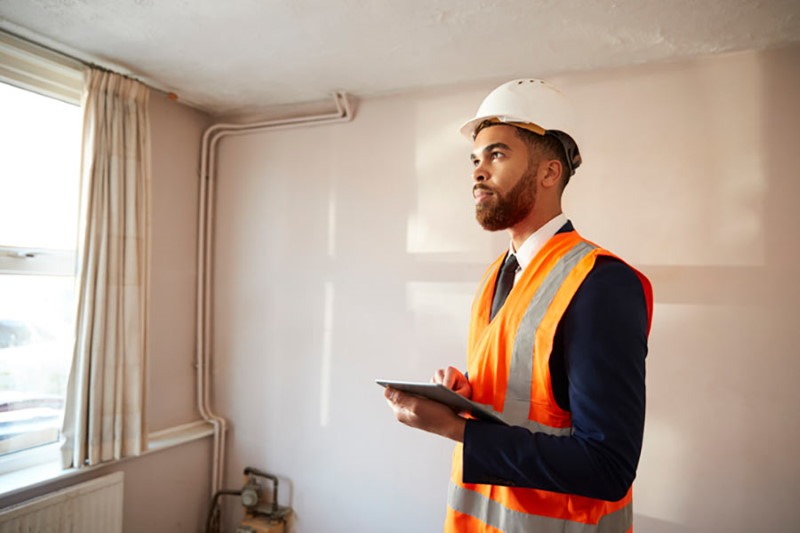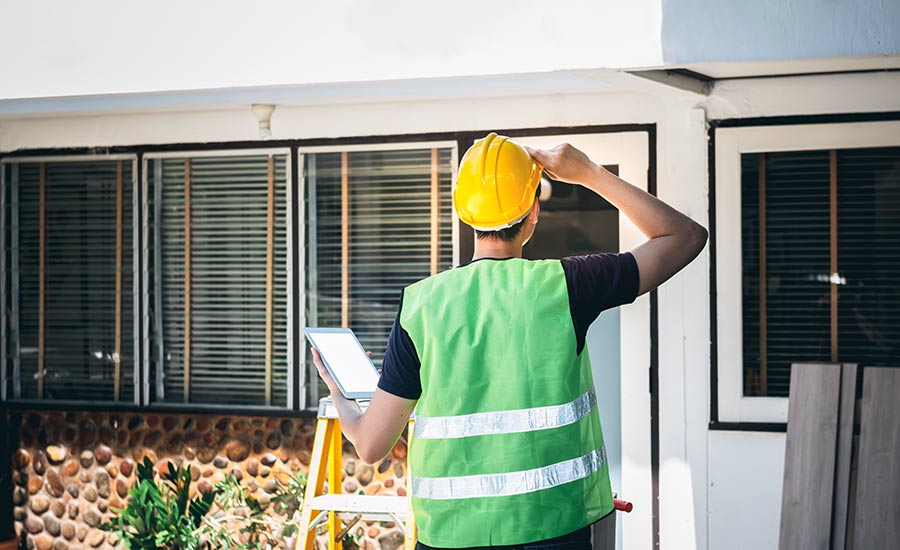
Did you know that 82% of homebuyers in 2023 and 2024 have regrets, with the most common being purchasing a home that requires excessive maintenance?
For inspection businesses, this presents a significant challenge, since delivering thorough, reliable inspections is critical to maintaining trust and ensuring client satisfaction.
A well-structured home inspection checklist helps ensure a comprehensive inspection by covering every area of the property, leading to more accurate reports and fewer missed details.
Read on to learn how something as simple as digital checklists can help you in the process.
Create a custom home inspection checklist.
Try doForms For Free!
What Is A Home Inspection Checklist?
A home inspection checklist is a document that helps evaluate the condition of a house before it’s bought or sold.
It includes checking various elements related to the structure and systems of the home, such as the foundation, roof, plumbing, HVAC and electrical systems.
Home inspection checklists can be:
- Paper-based, requiring manual data entry and physical storage
- Electronic, offering digital entry, easier organization and instant sharing capabilities through mobile apps or software
A Buyer’s Home Inspection Checklist vs. A Seller’s Home Inspection Checklist
Home inspection checklists can vary based on the specific needs of buyers and sellers. Checklists for sellers differ from buyers’ because neither side will automatically trust the other’s inspector. By comparing checklists, they can reach a consensus.
Buyer’s Inspection Checklist
This checklist aims to identify potential issues and safety concerns like poor structural design, safety hazards or nonfunctional appliances that can incur additional costs. It helps buyers decide about the purchase and negotiate repairs or pricing.
Seller’s Inspection Checklist
This checklist focuses on identifying and addressing any issues before listing the property, potentially increasing its market value and reducing the chance of surprises during buyer inspections. It helps sellers fix issues in advance to pass the inspection.

House inspection checklists facilitate the inspection process during the pre-buy walkthrough
Why Use An Electronic Home Inspection Checklist?
For inspectors looking to save time and reduce errors, electronic home inspection checklists can be an effective alternative to paper-based systems.
Increased Efficiency
Digital home inspection checklists enable quick form completion on mobile devices, cutting down on manual note-taking and avoiding the risks of lost or damaged paperwork.
Real-Time Data Access
Electronic checklists offer immediate access to inspection data, enabling instant report sharing with clients, real estate agents or other parties.
Enhanced Accuracy
Electronic home inspection checklists ensure every inspection item is thoroughly checked, helping reduce errors and omissions.
Easy Organization & Storage
Digital checklists are stored in cloud-based systems, eliminating the need for physical storage — this also facilitates retrieval and organization of past reports.
Customizable Templates
Mobile software enables the creation of customized forms tailored to specific home inspection needs during specialized property evaluations.
Cost Saving
Switching to electronic home inspection checklists reduces the need for paper, printing supplies and physical storage, ultimately lowering operational expenses.
Seller’s House Inspection Checklist Template
Preparing a home for inspection helps ensure a smooth sale by identifying and fixing issues before they become problems.
Use the seller’s house inspection checklist below to review key areas of the property and resolve concerns before closing.
Exterior Inspection
- Check the roof for leaks or sagging areas.
- Ensure gutters and downspouts are clear and properly directing water away from the foundation.
- Inspect siding for peeling paint and cracks.
- Check the foundation for visible cracks or signs of settling.
Roof & Attic
- Check for signs of pests or damage.
- Verify there is adequate insulation.
- Confirm there is proper ventilation to prevent moisture buildup.
Plumbing
- Check pipes for leaks, rust or signs of corrosion.
- Make sure the water heater is functioning.
- Test faucets and showerheads for proper water flow and pressure.
- Inspect sinks, tubs and toilets for clogs or slow drainage.
Electrical System
- Verify that outlets and switches work and are properly grounded.
- Confirm the circuit breaker panel is accessible and labeled.
- Inspect wiring for signs of wear or damage.
HVAC System
- Test the furnace or heating system to ensure it’s working properly.
- Check the air conditioning unit for proper function and any unusual noises.
- Verify that filters are replaced and clean.
Interior Inspection
- Inspect walls and ceilings for signs of water damage and cracks.
- Check floors for scratches, loose tiles or uneven surfaces.
- Confirm that interior doors and windows open, close and lock properly.
- Ensure all appliances work and are clean.
Safety & Compliance
- Confirm that smoke detectors are working and have new batteries.
- Check if carbon monoxide detectors are properly installed and functioning.
- Verify that handrails and guardrails comply with safety standards.
52 Must-Have Questions To Include In A Home Inspection Checklist For Buyers
A buyer’s home inspection checklist covers several essential categories of home elements:
- House foundation
- Structural integrity
- Property exterior
- Home interior
- Plumbing, heating, ventilation and air conditioning
- Electrical system
Here’s a list of 52 questions for each category to reference during the home inspection and include in the checklist.
Foundation & Structure
- Is the foundation of the house in good condition?
- Does the base of the walls show cracks or shifts in the foundation?
- Are there trees near the house foundation?
- Is there any sign of standing water?
- Does the septic tank have any leaks?
- Is the drainage system directing water away from the house?
- Are there any soggy areas in the landscaping?
Exterior
- Is there rotted wood or termite damage?
- Does the stucco have any large cracks?
- What is the condition of windows and door frames?
- Is exterior paint faded, stained or peeled?
- What is the condition of the roof?
- Was the roof recently replaced?
- Does the roof have patching?
- What is the condition of the chimney?
- What is the state of siding, is it decayed, cracked or loose?
- Do gutters drain water properly?
- Are there any dangling wires?
- Is there asbestos in the exterior material?
- Does the exterior of the house look like it may need repairing or repainting in the future?
Interior
- Are there any unpleasant smells?
- What appliances are included with the purchase of the house, if any?
- What is insulation like?
- Do electrical outlets and switches work properly?
- Are electrical outlets grounded?
- Are there enough electrical outlets in all the rooms?
- Is there any damage or stains on walls, ceilings and floors?
- Is the basement damp?
- What is the condition of the flooring, and will it need replacing?
- Do doors and windows open and close properly?
- Is there leakage around sinks?
- Check the water pressure – is it adequate?
- What is the ventilation throughout the home like?
- What is the ventilation and insulation like in the attic?
- How does the interior of the roof structure look?
- Are toilets functioning properly?
- Are there any smoke and carbon monoxide detectors and can you spot them easily?
- Are there any stains on the underside of the roofing that suggest leaks?
Plumbing, Heating, Ventilation & Air Conditioning
- What is the condition of the pipes? Are they rusted or damaged?
- Are there any leaks in the pipes?
- Is the water pump working properly?
- Is there any noise coming from the plumbing system?
- Do pipes restrict water flow?
- Does every room in the house get adequate air flow?
- Is the cooling system rusty?
- Can you smell gas?
- Do air filters in the cooling unit need replacing?
- Did heating pipes, water pipes and air ducts have asbestos on them?
Electrical System
- Are cables protected and secured?
- Are any splices exposed?
- Can you find the service panel?
- Do fuses or breakers overheat?

A buyer’s home inspection checklist ensures that all critical aspects of the property are thoroughly examined
How To Build A Professional Home Inspection Checklist With doForms
Whether you are a buyer or seller, doForms makes home inspection checklists simple to create and use.
Thanks to our mobile forms’ DIY approach, you can choose from several pre-made house inspection templates, modify or build them from scratch using over 30 drag-and-drop features.
These allow you to capture data on-site, take in-form photos, make instant calculations, generate reports and upload and sync them to your cloud.
Best of all, it doesn’t require an Internet connection, so you can complete and access the checklist anytime, anywhere — even in areas with limited connectivity.
Once you regain Internet access, your data will sync automatically, ensuring all your information is updated and available.
Build a custom home inspection checklist.
Try doForms For Free!
FAQs About Digital Home Inspection Checklists
As the home inspection industry adopts digital solutions, you might have questions about the benefits and features of digital checklists. Here are answers to common questions.
Can digital home inspection checklists be integrated with other software?
Yes, doForms can be integrated with multiple software solutions such as property management, real estate or CRM software, facilitating data transfer and reporting capabilities.
How can I access and review home inspection checklists?
You can access and review home inspection checklists from any mobile device, including laptops, tablets and smartphones.
Do digital home inspection checklists support multimedia attachments?
Yes, doForms allows you to attach photos and videos, providing a more comprehensive record of a property’s condition.
Can digital home inspection checklists help with regulatory compliance?
Yes, doForms helps ensure compliance by including all required inspection criteria in your digital checklist. It also provides a detailed and easily accessible record of inspections performed.
Ready to go digital?
Try doForms For Free!




